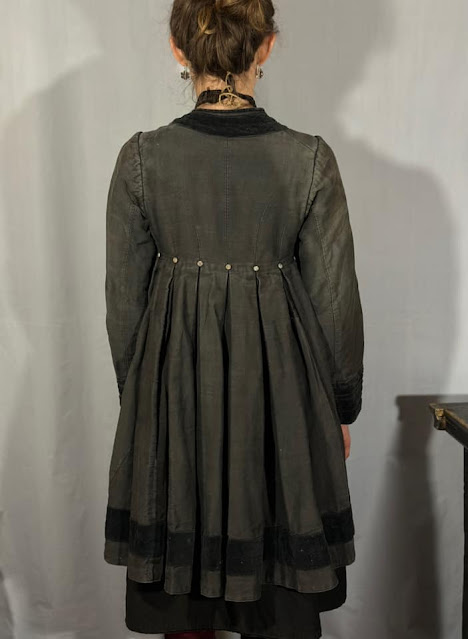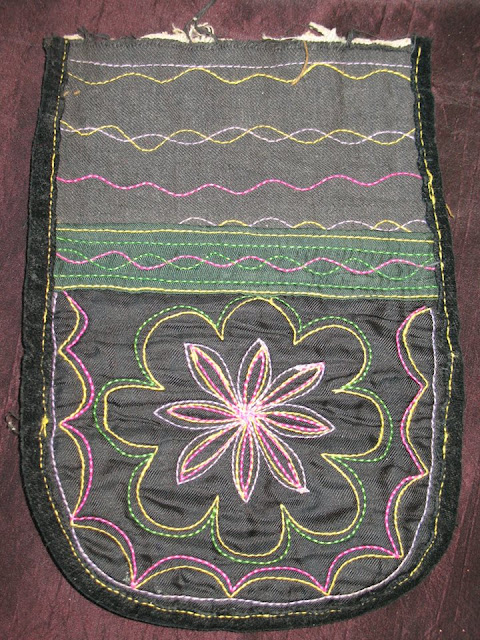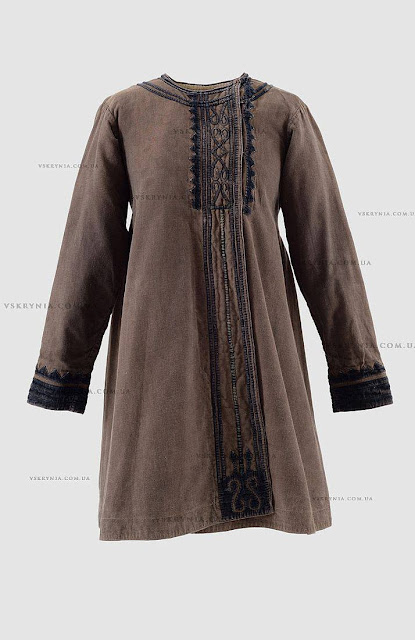Hello all,
I have recently obtained a book with fantastic detailed photographs of folk costumes of the Poltava Oblast. So I wish to publish some of them here.
Poltava is considered by many to be the heart of Ukrainian Identity, at least in the East. The East Ukrainian Literary language is mostly based on the Poltava dialect. Here is the location of Poltava Oblast in present day Ukraine. Poltava region is located east of center, and is in violet on this map.
Here is the location of Myrhorod Raion within Poltava Oblast.
The folk costumes of Eastern Ukraine do not vary as much as those in the west, differing mostly in style and details. This is due to the fact that our ancestors were present in Western Ukraine far earlier than on the steppes. Expansion into the plains had to wait until the invention of the sod breaking plow. Poltava is first mentioned in 1174. Thus it is older than Moscow.
Myrhorod itself was founded in the 12th or 13th centuries.
Much information and individual articles are known from Eastern Ukraine, but a disturbing number of them have no specific known origin. I wish to present the exact provenance of as many items as I can. Many items are available online today which are labelled 'Poltava' if they look like they are from Eastern Ukraine. I am sure many are mislabelled.
The traditional costume of Myrhorod is much like that of others in the general region. The base garment is the sorochka, or chemise.
Here is the layout of the chemise from this region, although this particular one is from Cherkasy Oblast, Drabiv Raion, Byrliwka village.
Embroidery on the shoulder insets is done on the lower edge, and shows on the upper arm when the garment is worn. In this image, the upper band of embroidery is on the shoulder inset. Below this can be seen the seam with the sleeve piece. The narrow band below, and the area design are embroidered on the sleeve. One often sees modern Ukrainian blouses where this is not understood, and the shoulder embroidery ends up far to low, sometimes around the elbow.
The sleeve was often sewn in smoothly like this, but for dressier occasions, especially for girls of courting age, the sleeve was made wider, and was gathered in the center on the outside of the sleeve.
It is generally thought that the earliest embroidery in the region was white on white counted satin stitch, locally called lyshtva.
Here is an example from Petriwka village, which also includes eyelets.
Cutwork was invented in the Renaissance, and spread all over Europe, It found a particular home on the Ukrainian steppes, and Poltava cutwork is well known for its fineness. Here are more examples from Myrhorod Raion.
Poltava cutwork is characterized by the elegant narrow bars of overcast, and cross stitches securing the corners.
Later on, other stitches began to be used, like cross stitch, usually in red and black, outline stitch, hemstitch, and others. White on white designs were created by rows of hemstitching, the alternate filled and open spaces creating a design. Here is an example accompanied by polychrome cross stitch.
Other stitches are used as well. The above example is counted satin stitch in black and white.
Outline stitch is also used. Often different techniques are combined in the same garment.
The original lower body garments were the apron and plakhta. The apron is a simple rectangle, made from one width of cloth. It could be linen, with embroidery, or colored wool, with appliqued ribbons, it could be of brocade, or home printed linen. It was often stored with vertical folds, which are visible when worn. The apron is always shorter than both the sorochka and the plakhta.
The original great plakhta, or 'winged' plakhta is made of two widths of home woven wool, that are joined together about halfway, usually with a decorative stitch.
This garment is wrapped around the waist the short way, a narrow sash, usually with pompoms on the ends, is wrapped around and tied in the back, and the unjoined lengths fall down over the sash on sides. These 'wings' might be tucked into the waist. A second sash is then tied over the apron to complete the look.The plakhta is hand woven, usually in a checkerboard design with individual motifs within each square or rectangle. Similar garments are worn by some Russians and Belorussians, but the Ukrainian plakhta is unique and unmistakable. Often the parts that would be covered by the flaps are woven in simpler colors and designs. These plakhtas are all from the Myrhorod Raion.
Notice how the colors often proceed diagonally from rectangle to rectangle. This is achieved by overlay weaving with individual colors on small hand shuttles.
The rectangles vary from almost square to quite narrow. The range of colors depends on age, marital status, skill of the weaver, and the ability to buy or make a wide arrangement of dyes. Generally younger girls wore brighter colors, and older women darker ones.
Sashes are long, going around the waist a minimum of twice, and woven with many different techniques, sprang, inkle woven, etc, but in Poltava Province they were often tapestry woven. This example above is woven with simple triangles along most of its length, but the ends, which are the most visible, have a floral design.
The cut does vary somewhat, and modern examples tend to be shorter, and have darts in front at the waist, which are lacking in the original garments.
Many various necklaces are worn for ornament. These include crosses - khrestyky, items fashioned from coins - dukaty, coral - korali, glass or other beads - patsiorky, amber - burshtyn, and / or semifossilized mother of pearl - balamuty.
Kerchiefs and shawls, today considered to be so typically Ukrainian, are late additions to our attire. They were hugely fashionable over all of Europe in the early to mid 1800's. In the Poltava region they were always commercially produced.
Just a few more images from Myrhorod.



























































































%20%D0%A6%D0%B5%201930%20%D1%80%D1%96%D0%BA.jpg)







































































%20-%20Copy.jpg)







,%2090%20%D0%BB%D1%96%D1%82%D0%BD%D1%8F%20%D0%B6%D1%96%D0%BD%D0%BA%D0%B0,%20%D1%81%D0%B2%D1%96%D1%82%D0%BB%D0%B8%D0%BD%D0%B0%201926%20%D1%80..jpg)

%20%D0%A6%D0%B5%201930%20%D1%80%D1%96%D0%BA.jpg)